Which Client Adapter to Choose?
|
|
The Different Kinds of Client Adapters
There are four major varieties of Wi-Fi client adapters. In addition to those four there are a few outliers. Some access points (like D-Link's DWL-900AP+) claim to be able to operate as client adapters, but I've had indifferent success with such devices and don't recommend them in service as client adapters. A few very recent computer models like some Tablet PCs and few notebooks are being shipped with built-in Wi-Fi client adapters. Sometimes the built-in clients can be disabled and an external client adapter installed; sometimes what you get is… what you get, forever and ever, amen. Down the road you might want to (or need to) move to an 802.11a network on 5 GHz, so if your computer comes with a built-in, nonremovable and non-disable-able client adapter, you could be completely out of luck.
In my view it's still a little too soon to be building Wi-Fi client adapters into computers, because the field is simply evolving too quickly, and the useful lifetime of a client adapter is probably less than the useful lifetime of a computer. Therefore, if you're shopping for any device with built-in Wi-Fi hardware, check carefully to see if it can be disabled and other Wi-Fi devices installed instead.
Here are the four major client adapter categories:
-
PCMCIA (PC) cards
-
PCI cards
-
USB client adapters
-
Ethernet client adapters
Each different type of adapter has its strengths, weaknesses, and miscellaneous peccadilloes. I'll run through the list of categories to give you a sense of what each type of client is like. At the end of this chapter I'll provide a list of pros and cons for each category to help you decide which type to use in what circumstances.
PCMCIA (PC) Cards
Most people these days refer to PCMCIA cards as 'PC cards,' a term that differs so little from the term 'PCI cards' (which I'll discuss next) as to cause occasional confusion. That's why I prefer to use 'PCMCIA' for clarity's sake. The original acronym stands for Personal Computer Memory Card International Association, the industry group that defined the PCMCIA card spec in the late 1980s. While originally intended to allow people to easily add memory to laptops, the spec has become general enough to support virtually anything that can be attached to a computer expansion bus.
There are three types of PCMCIA cards:
-
Type I cards are for simple things like memory. They are 3.3 mm thick.
-
Type II cards are for more complex devices, including modems, network interface cards, and wireless networking client adapters. They are 5.5 mm thick, but can have protruding extensions for connectors or antennas. (I call such extensions 'bulges.')
-
Type III cards are used for plug-in disk drives, and are 10.5 mm thick.
All Wi-Fi PC cards that I have seen are Type II.
Just as there are three types of cards, there are three types of slots: Types I, II, and III, each capable of holding one card of the corresponding type. Larger slots can also hold multiple cards in certain combinations; a Type II slot can hold one Type II card or two Type I cards. Most modern notebook computers have one or two Type II slots. Type I and Type III slots are far less common.
The Cardbus Compatibility Problem
As if that weren't confusing enough, PC cards come in two 'generations.' The original PCMCIA specification was 16-bit in nature. In 1999, a new, 32-bit descendent of the original spec appeared in products. These 32-bit PC cards go by the name 'Cardbus.' Cardbus cards can handle more data more quickly, and also contain new technology to reduce power consumption, which is a critical issue in battery-operated laptops.
The downside to Cardbus cards is that they require 32-bit Cardbus slots, and will not plug into an older, 16-bit slot. (16-bit cards, however, will plug into Cardbus slots and work properly.) If you have an older laptop or other computer equipped with PC card slots, be careful what Wi-Fi client adapters you buy. Computers made before 1999 probably won't be Cardbus compatible. Not all Wi-Fi PCMCIA client adapters are Cardbus cards, but the ones offering higher bit rates than 802.11b generally are. This includes 802.11b+ products (like D-Link's AirPlus line) and 802.11a.
If you're not familiar with installing PCMCIA cards in a slot, it may even be difficult to tell when a Cardbus card isn't fully installed. A Cardbus card will go all the way to the end of a pre-Cardbus Type II slot, but it will refuse to go the final 1/8" of an inch or so that establishes electrical connection. That last 1/8" has a different 'feel' to it than simply a card sliding into a slot: It feels like something is 'taking hold' of the card.
Of course, if a Cardbus card won't seat all the way in a slot, the card itself won't work. If you attempt to install a PCMCIA client adapter and it won't work, check to be sure that you're not trying to install a 32-bit Cardbus card in a 16-bit slot.
A typical PCMCIA client adapter is the D-Link DWL-650, shown in Figure 7.1. Most other cards look very much like it, except for the shape and size of the antenna bulge.
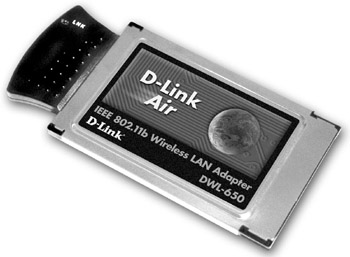
Figure 7.1: The D-Link DWL-650: PCMCIA Card Client Adapter. (Photo courtesy of D-Link.)
One crucial difference among PCMCIA client adapters, especially for Wi-Fi performance fanatics and adherents of the wardriving hobby (see Chapters 18 and 19) is whether there is a jack on the antenna bulge for attaching an external antenna. The Orinoco Silver and Gold cards have a very small jack for an RMC connector on the edge of the antenna bulge. (See Chapter 8 for descriptions of the types of connectors you'll encounter in Wi-Fi work.) The jack comes with an inconspicuous flat plastic plug that isn't easy to see and may take a knife point to pry out-look closely!
The only two PCMCIA clients with antenna jacks that I have actually used are the Orinoco Gold and the Cisco Aironet line. The current Aironet 350 is an intriguing design: The entire antenna bulge pops off, exposing two MMCX connector antenna jacks. (The card may also be purchased without the bulge antenna, thus requiring you to attach antennas to one or both of the antenna jacks.) There are two jacks because the bulge contains two separate antennas, and the card itself uses the two antennas to support diversity reception, for better throughput. An external antenna can be connected to either, or to both.
The Cisco Aironet 342 PC card is an older model, now out of production, but interesting in that it acted as the 'guts' of Cisco's PCI product for the PCI expansion bus. The PCI card consisted of a Type II PCMCIA slot with some associated logic, and a short run of coaxial cable from one of two MMCX antenna jacks to a connector on the metal card spine. You can actually remove a small retainer bracket and pop the card out and use it in your laptop, assuming you have an external antenna with an MMCX plug.
The Battle of the Bulge Antennas
The problem with PCMCIA client adapters is simple: The antenna bulge isn't large enough to contain a reasonable antenna, and the antennas that will fit in the bulge (apart from being small, inefficient, and generally weak) exhibit something called horizontal polarization. Without going into the physics here, think of it as an alignment problem: Your access point antennas are typically vertical (pointing up) and your laptop antenna is horizontal. A radio transmitter and receiver can pass a stronger signal between them if their antennas are either both horizontal or both vertical.
This problem haunted me for a couple of months, during which time I could not get my laptop to connect effectively to my access point from my living room, which is at the opposite end of the house from my office, where the access point lives. I was forced to build an external gain antenna, which I plugged into my Orinoco Gold card while working in the living room. Details of this antenna and how to build one yourself (if you're so inclined) are in Chapter 15.
One recent and interesting innovation around the polarization problem is Asanté's FriendlyNet AeroLAN AL1511 PCMCIA adapter, shown in Figure 7.2. It has a pair of hinged antennas that fold horizontally for storage, and then unfold vertically for use. Asanté claims that using the antennas vertically can improve signal strength by 17%, and I can well believe it. (I have not tested this unit myself.)
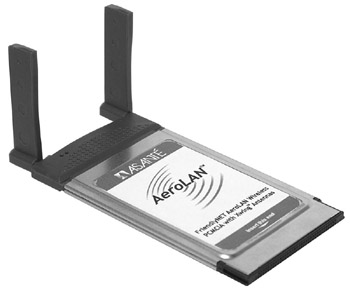
Figure 7.2: The Asanté AeroLAN 1511: Client Adapter. (Photo courtesy of Asanté.)
I powerfully recommend using PCMCIA cards with antenna jacks, so that if you find yourself in a dead spot with your laptop, you have the option of using an external antenna. Without that jack, you're out of luck-and do not misunderstand me as to how completely miserable the typical PCMCIA card 'bulge' antenna really is!
Table 7.1 lists all the PCMCIA client adapters I'm aware of with antenna jacks. See Appendix A for Web site references and suppliers.
| Card Name | Connector Type | Notes |
|---|---|---|
| Orinoco Silver | RMC | Only supports 64-bit WEP |
| Orinoco Gold | RMC | Like Silver except has 128-bit WEP |
| Aironet 342 | MMCX (dual) | No longer sold new; look for used |
| Aironet 350 | MMCX (dual) | |
| BreezeNet PC-DS.11b | RP-SMA | By Alvarion, formerly BreezeCom |
| Demarc Tech Reliawave | MMCX (dual) | High power output: 180 mw |
| Signull | MMCX | A modified D-Link DWL-650 |
| Teletronics | MMCX | With or without integrated antenna |
| ZComax XI-300 | MMCX (dual) | Prism 2. 35 mw |
| ZComax XI-325 | MMCX (dual) | Prism 2.5. Also in 100mw & 200mw |
PCI Cards
If you want to add Wi-Fi capability to a typical desktop PC (as opposed to a laptop) the conventional way is to open the PC's case and add a Wi-Fi PCI (Peripheral Component Interconnect) plug-in card to the PC's card bus. The card bus on most desktop PCs will accept four or five PCI cards, and these days, with more and more PC functionality on the PC motherboard, most of those slots go unused.
Wi-Fi PCI cards run about $60 to $90 street price. The popular Linksys WMP11 product is shown in Figure 7.3, and is fairly typical of its class. PCI client adapters are often more expensive than PCMCIA card client adapters, because many actually contain PCMCIA client adapter PC cards in a framework allowing them to plug into a computer's PCI expansion bus. The Cisco Aironet PCI adapters are simply PCI bus hosts for Aironet PCMCIA modules without integrated antennas.
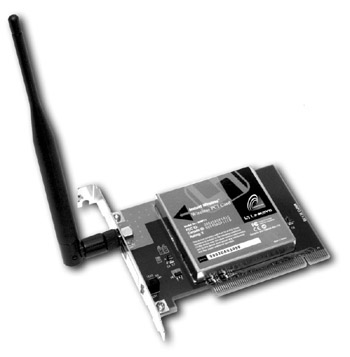
Figure 7.3: The Linksys WMP-11: PCI Client Adapter. (Photo courtesy of Linksys.)
Most Wi-Fi PCI card products have a short flexible antenna on the card spine, which protrudes behind the PC when the card is installed. This is a much better antenna than is present on Wi-Fi PCMCIA (PC) cards, which are the type of client adapter used in laptops. Sometimes adjusting the angle of the antenna can improve your signal strength slightly, which is worth trying when you're on the outskirts of your access point's range. The better antennas can both pivot from side to side and tilt forward back.
The antenna can be removed, and an external antenna (like a commercial blade antenna or a tin can antenna you make yourself ) can be attached if the standard antenna can't quite 'reach' the associated access point. This requires a short coaxial cable jumper called a pigtail (see Chapter 8) to run from the antenna connector on the card spine to the gain antenna. For a Linksys WMP11 or DLink DWL-520, you'll need a pigtail with a RP-SMA (Reverse Polarity SMA) connector on one end and an N male connector on the other. Other brands (like Cisco, which uses an RP-TNC connector) use other connector types, but pigtails are generally available for all major card models.These may be obtained from Fleeman, Anderson, & Bird and other vendors (see Appendix A).
A second form of Wi-Fi PCI card is actually a plug-in adapter for a PCMCIA (PC) card, like those used in laptops. The Linksys WDT11 is a PCI card that plugs into your PC's card bus (see Figure 7.4). In turn, it has a slot in its metal spine into which you can plug a PCMCIA card like the Orinoco Silver or Gold, the Linksys WPC11, or the Cisco PCM340. The WDT-11 costs about $35, but it allows you to share a Wi-Fi PCMCIA card between your laptop and your desktop PC. This might once have been an advantage, but Wi-Fi cards have gotten so cheap it hardly seems worth spending $35 to save $50!
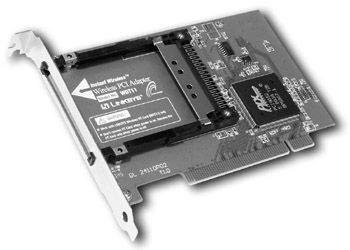
Figure 7.4: The Linksys WDT-11: PCI PC Card Adapter. (Photo courtesy of Linksys.)
Installing PCI cards means some simple screwdriver work, and a computer that opens up without a serious struggle. (Not all do.) If you don't want to take the step of opening up your PC, consider a USB adapter, which is a Wi-Fi client adapter that stays outside your PC's case and connects to your PC via a USB port. I'll talk about those next.
USB Adapters
By now, most people are familiar with the Universal Serial Bus (USB) technology that has been present in nearly all Intel-based PCs since 1997 or so, and fully supported by Windows 98, ME, 2000, and XP. (Windows 95 and NT do not support USB at all, and the patches distributed to add USB support to them are extremely dicey. Attempting to use USB under Windows 95 or NT is an invitation to fury.) The current USB 1.1 specification allows data to move at up to 12 Mbps (megabits per second) over a USB connection, though in practice that top speed is usually not quite achieved.
Several manufacturers are now offering Wi-Fi client adapters that connect to your computer via a USB port. These are hands-down the easiest Wi-Fi client adapters to install and configure: You don't have to open the case of your computer (as with PCI Card adapters) and you have a great deal more flexibility in positioning your client adapter antenna without losing signal strength by connecting an external antenna through a pigtail made of coaxial cable. (With a PCMCIA card and a laptop, an antenna/pigtail is your only option to improve the generally execrable performance of the card's built-in antenna.)
A USB adapter has the advantage that it resides completely outside your computer's case. This gives it an unappreciated edge over PCI and PCMCIA adapters: You can move it around, up to a distance of 15 feet (the longest recommended USB cable run) to improve the quality of your link. What most people don't understand is that a typical home with a wireless access point or gateway in it (usually upstairs or in the den) is full of microwave 'shadows' and 'dead spots' where the access point's signal is weak or nonexistent. If your desktop or laptop finds itself in one of those Wi-Fi twilight zones, your only options are to move the computer or attach a movable antenna. Moving the computer is usually problematic (desks are where they are, as a rule) and external antennas must be used with great care, lest you lose all your signal in the coaxial cable running from the computer to the antenna. In a USB adapter, the microwave signal does not move through the connecting cable, so nothing is lost, even across the maximum cable length of 15 feet.
And although I'm not entirely sure why this should be so, USB adapters are currently the cheapest type of client adapter. Their street price is down to about $50 at major online retailers like Amazon.
Finally, little things do matter, and USB client adapters have the small advantage that they are powered through the USB port and do not require yet another wall wart to take up a space (or maybe two) on your computer power bar.
The USB adapter I've had most experience with is Linksys' WUSB11. It comes with software on a CD that you must install first. Once the software is installed, you plug in the device itself, and it just works. The WUSB11 is tiny (see Figure 7.5, where a WUSB11 sits next to my business card) and weighs less than two ounces. It can be easily packed along in a briefcase for connection to a laptop.
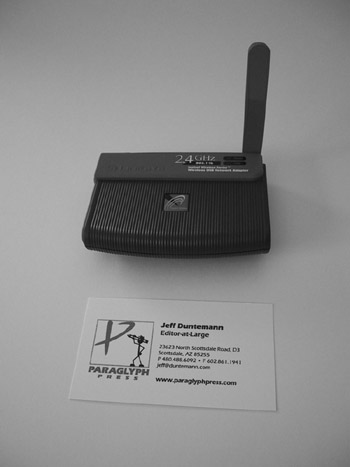
Figure 7.5: The Linksys WUSB11: USB Client Adapter.
The 'Popsicle stick' antenna folds down into a slot until you need it, and as an antenna it far outperforms any PCMCIA card I myself have tested. The WUSB11 comes with six feet of USB cable, which allows you to position it where it picks up the best signal without having to move your laptop around.
The WUSB11 does have a downside for road warriors: Boingo does not currently support it. Ditto for Wardrivers: Netstumbler does not work with it.
My experiments in parking a rectangular-parabolic mesh reflector (see Chapter 17) behind a WUSB11 show that a little 1/4' mesh hardware cloth can almost double the reach of one of these little blue gems.
The big disadvantage to current USB adapters is that their bit rate is limited by the 12 Mbps bit rate of USB 1.1. USB 1.1 client adapters can achieve 11 Mbps but will not operate at higher rates than that. 'Hi-Speed' USB 2.0 is now being implemented in new computers, and it will move data at a breathtaking 480 Mbps. At some point, we will see 802.11a USB adapters capable of the full speed supported by the 802.11a spec. Until then, USB adapters will support 11 Mbps 802.11b only.
Ethernet Client Adapters
By far the most recent client adapter category is the Ethernet client adapter. These are not plug-in cards, but desktop devices that interface via a category 5 patch cable to your computer's Ethernet network adapter.
Physically, Ethernet client adapters resemble USB client adapters, in that they are separate devices connected to your computer by a cable, and the length of the cable is usually not a serious limitation. At very least you can put eight or ten feet between your computer and the adapter, meaning you can park it atop your cube wall or on a bookcase to get it up and above metal objects that weaken your reception of your access point's field. They are unlike USB adapters in that they require a separate wall wart power supply.
The first widely available Ethernet client adapter was the Linksys WET11, shown in Figure 7.6. Linksys calls it a wireless Ethernet bridge, which may be confusing to people who assume bridges are strictly for linking two networks together. (That's what 'bridge' means in the insider jargon of networking enthusiasts.) Although two WET11s can certainly be used to bridge two networks, most people use them as client adapters for connecting Ethernet-capable computers or other devices to a Wi-Fi access point.
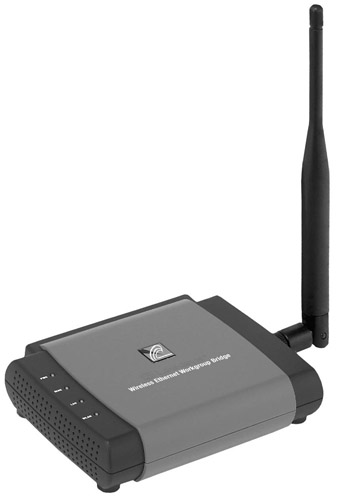
Figure 7.6: The Linksys WET11: Ethernet Client Adapter. (Photo courtesy of Linksys.)
D-Link has recently announced a very similar Ethernet client adapter, called the DWL-810. I have not tested it yet, but the specs look about the same-and, like the WET-11, it costs over $100, more than some access points, and a lot more than most USB client adapters.
The primary use for Ethernet client adapters so far has been to wirelessly connect game consoles like the Playstation 2 and Microsoft's XBox to a Wi-Fi network, as a means of connecting to Internet online multiplayer game systems like Xbox Live. Game consoles, while computers internally, lack the customary I/O of a desktop or laptop machine. An Ethernet network adapter is the only way to connect them to a network, so a Wi-Fi Ethernet client adapter is the only way to network game consoles wirelessly.
The WET-11 has an interesting configuration system: You plug it into a network router/switch port, or simply into a computer's Ethernet port, and then run a configuration utility from CD-ROM without installing any software anywhere. The CD-ROM based utility allows you to enter parameters like SSID, channel, and WEP keys. Once the unit is configured, it stores the configuration internally in flash memory, and you can then unplug it from the computer or network and attach it to a game console (or some other computer or device) with a short category 5 patch cable. Without any further configuration, it 'just works.'
You don't need a CAT 5 crossover cable with the WET-11, because there is a crossover/straight through switch on the side of the device. The straight-through switch setting is for connecting the WET-11 to a network switch or hub; the other (the crossover setting) is for direct connection to a computer or game console's Ethernet network port.
The WET-11 works very well, and I predict that the Ethernet client category will become quite popular in the future, especially if increased competition drives the price down.
|
|
EAN: 2147483647
Pages: 181
- A View on Knowledge Management: Utilizing a Balanced Scorecard Methodology for Analyzing Knowledge Metrics
- Technical Issues Related to IT Governance Tactics: Product Metrics, Measurements and Process Control
- Governing Information Technology Through COBIT
- Governance in IT Outsourcing Partnerships
- The Evolution of IT Governance at NB Power